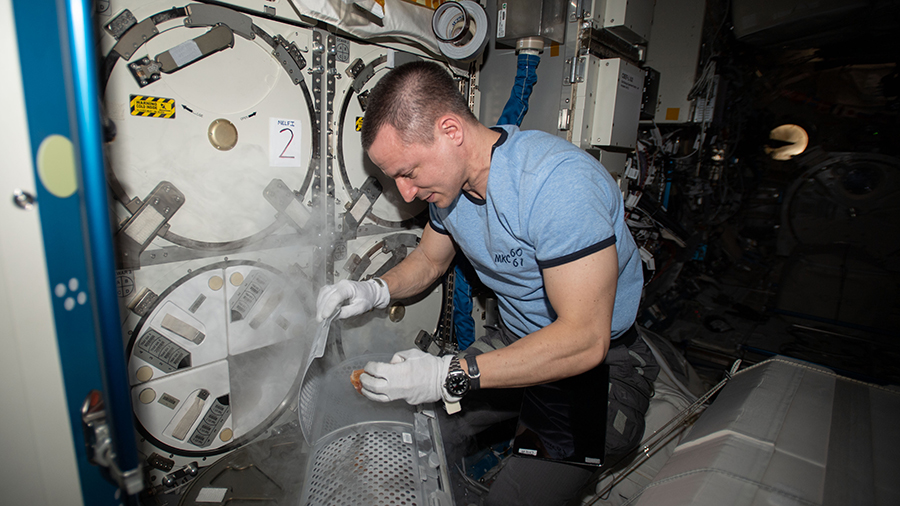
Cardiac research and 3D bioprinting aboard the International Space Station today are helping NASA improve health for humans in space and on Earth. The three Expedition 62 crewmembers also participated in eye exams and radiation checks.
Three new Expedition 63 crewmembers are in Kazakhstan just two weeks away from beginning a 195-day mission on the station. NASA astronaut Chris Cassidy joined Roscosmos cosmonauts Anatoly Ivanishin and Ivan Vagner for a traditional flag-raising ceremony today outside the Cosmonaut Hotel at the Baikonur Cosmodrome. The trio is due to liftoff April 9 at 4:05 a.m. EDT and arrive at their new home in space about six-and-a-half hours later.
Back aboard the orbiting lab, the station crew spent the afternoon on eye checks. NASA Flight Engineer Jessica Meir started the optometry work and scanned her crewmates’ eyes using the Human Research Facility’s ultrasound device.
NASA astronaut Andrew Morgan then took over and imaged the eyes of Commander Oleg Skripochka using optical tomography (OCT) gear. The OCT uses lightwaves for non-invasive mapping and measurement of a subject’s retina.
Morgan started the day with ongoing tests of a 3D bioprinter without using human cells. The device, also known as the Bio-Fabrication Facility, seeks to manufacture human organs in space due to the detrimental effects of Earth’s gravity. Patients on the ground would benefits and future astronauts on planetary missions could print their own food or medicines.
Meir checked samples of cultured cardiac muscle tissue for the Engineered Heart Tissues experiment in the morning. The investigation is exploring cardiac function in weightlessness that may provide new drug developments for astronauts and Earthlings.
In the station’s Russian segment, Skripochka collected radiation measurements then serviced atmospheric purification gear. The commander also spent a few moments working on a specialized research furnace that levitates and observes metallic alloys at high temperatures.
